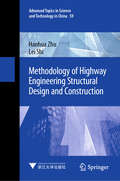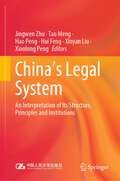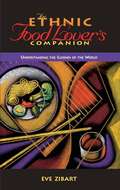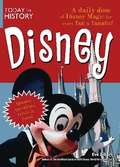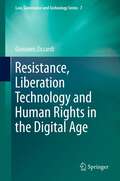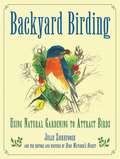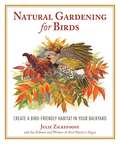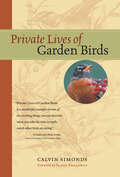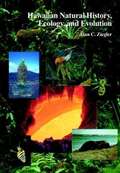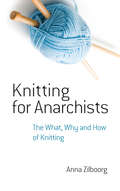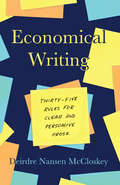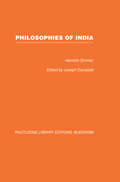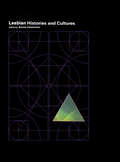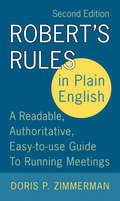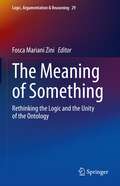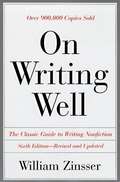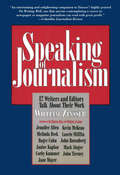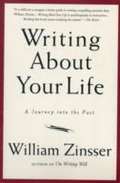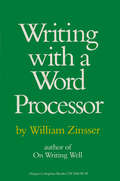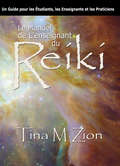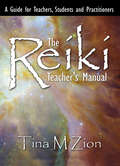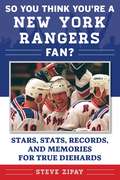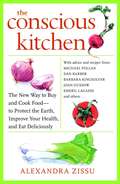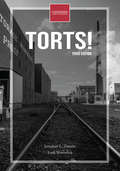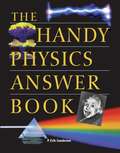- Table View
- List View
Methodology of Highway Engineering Structural Design and Construction (Advanced Topics in Science and Technology in China #59)
by Hanhua Zhu Lei ShiThis book mainly studies the methodologies of structural design and construction for highway engineering, which are applicable to the overall control and the precise operation of engineering structures. It explores the method of comprehensive analysis, the simplification of complex problems, and the application of typical engineering tools. In turn, the book presents a number of innovative approaches, e.g. the coordinated control of structural deformation method, the theory of underground engineering balance and stability, and the soft soil foundation treatment of “bumping at the bridgehead.” These methodologies are then illustrated in typical cases and representative problems, explained from a practical standpoint. Examples in special settings are also discussed, e.g. highway construction in Tibet, and rebuilding after the Wenchuan earthquake. The book offers a valuable reference guide for all those whose work involves highway engineering design, construction, management, and scientific research.
China's Legal System: An Interpretation of Its Structure, Principles and Institutions (Understanding China)
by Jingwen Zhu Tao Meng Hao Peng Hui Feng Xinyan Liu Xiaolong PengThis book provides a systematic and detailed introduction to the formation process and current development of China's socialist legal system. The classification of the constitution and constitution-related laws, criminal law, civil and commercial law, administrative law, economic law, litigation and non-litigation procedural law, social law, and the specifics of each sector of law are explained, which is a good guide for understanding the framework of China's legal system and the study of each sector of jurisprudence.
The Ethnic Food Lover's Companion
by Eve ZibartNowhere is America's rich ethnic and cultural diversity more apparent than in its restaurants. Every city and region of the United States has a unique cultural heritage - whether it's Cuban, Thai, Spanish, Italian, Indian, French or German - reflected in its dining choices. So what do you order in an ethnic restaurant, and how do you eat? The Ethnic Food Lover's Companion provides all the information you need to make every ethnic dining experience a pleasant and memorable one. In this book you will find information about what to expect in any type of ethnic restaurant; detail profiles of each ethnic cuisine, including key ingredients, spices and methods of preparation; cultural tips to put you at ease with the customs and etiquette of each cuisine; representative dishes of each cuisine defined and described; recommended complete meals from appetizer through dessert and easy recipes you can prepare at home.
Today in History: Disney
by Eve ZibartThis irresistible read is packed with fun facts and tasty tidbits about Disney, from stories about the entertainment empire's founding family to the inspiration for many of the popular theme park attractions. Memorable dates include: May 11, 1904 - The great surrealist painter Salvador Dali was born in Igueras, Catalonia. His 1946 collaboration with Walt Disney was one of the most unusual partnerships in the entertainment industry. December 2, 1929 - The Haunted House, in which Mickey Mouse takes shelter from the storm in what turns out to be a well populated mansion, was released in theaters. This movie was the first time animators created what was to become a popular Disney setting. January 9, 1937 - The release of Donald Duck's second film, Don Donald, proved that Donald was capable of carrying a series without any help from Mickey. It also served as the debut vehicle for a ducky girlfriend called Donna, who was later renamed Daisy.Released to coincide with the company's 18-month-long 50th anniversary celebrations, Today in History: Disney has something for Disney fans of every generation.
Resistance, Liberation Technology and Human Rights in the Digital Age
by Giovanni ZiccardiThis book explains strategies, techniques, legal issues and the relationships between digital resistance activities, information warfare actions, liberation technology and human rights. It studies the concept of authority in the digital era and focuses in particular on the actions of so-called digital dissidents. Moving from the difference between hacking and computer crimes, the book explains concepts of hacktivism, the information war between states, a new form of politics (such as open data movements, radical transparency, crowd sourcing and "Twitter Revolutions"), and the hacking of political systems and of state technologies. The book focuses on the protection of human rights in countries with oppressive regimes.
Backyard Birding: Using Natural Gardening to Attract Birds (Rodale Organic Gardening Book Ser.)
by Julie ZickefooseBird watchers everywhere dream of a landscape filled with berry-laden branches, nesting spots among twining vines, and birds crowding their feeding stations. Let "Backyard Birding" show you how to lay out the welcome mat for your feathered friends by considering all of their needs, including year-round water, food, and shelter. Whether youOCOre looking to create a hummingbird garden, install a water feature, create perches for birds, or simply let a corner of your property run wild, youOCOll find all of the inspiration and information you need here in "Backyard Birding. ""
Natural Gardening for Birds: Create a Bird-Friendly Habitat in Your Backyard (Rodale Organic Gardening Book Ser.)
by Julie ZickefooseA Practical Illustrated Bird-Oriented Gardening Book with Great Reference ChartsBird-watchers everywhere dream of a landscape dotted with fruiting shrubs, nests tucked into twining vines, and birds flocking to feeding stations. Let Natural Gardening for Birds show you how to lay out the welcome mat for birds by considering all of their needs, including year-round food, water, and shelter. Whether you’re looking to create a hummingbird garden, install a water feature, create alluring perches, or simply designate a corner of your property as a natural area, you’ll find all the inspiration and information you need in Natural Gardening for Birds, including:The best plants for nectar, fruit, and seedsThe most attractive foods to offer birdsHousing for cavity-nesting birdsSimple habitat enhancements like snags and perchesRegion-specific planting ideas and charts
Private Lives of Garden Birds
by Julie Zickefoose Calvin Simonds Scott ShalawayBrimming with stories, wisdom, and expert knowledge, this delightful book gives enthusiasts a peek into the private worlds of eleven North American birds: swallows, blue jays, chickadees, song sparrows, house sparrows, phoebes, mockingbirds, crows, red-winged blackbirds, robins, and hummingbirds. Calvin Simonds shows you how to really observe these birds -- how to interpret the caws of crows, recognize blue jays from their facial markings, understand the flight patterns of swallows. You'll be enthralled as you eavesdrop on a group of sparrows trading songs in a "hootenanny," feel the dry grip of a chickadee's claws on your fingers, tramp through a summer meadow to visit a phoebe, and much more.
Hawaiian Natural History, Ecology, and Evolution
by Alan C. ZieglerNot since Willam A. Bryans 1915 landmark compendium, Hawaiian Natural History, has there been a single-volume work that offers such extensive coverage of this complex but fascinating subject. Hawaiian Natural History, Ecology, and Evolution updates both the earlier publication and subsequent works by compiling and synthesizing in a uniform and accessible fashion the widely scattered information now available. An extensive annotated bibliography and a list of audio-visual materials will help readers locate additional sources of information.
Knitting for Anarchists: The What, Why and How of Knitting (Dover Knitting, Crochet, Tatting, Lace)
by Anna ZilboorgEvery knitter takes a different approach, and this revolutionary guide fosters experimentation and self-expression. Author Anna Zilboorg defies the notion of a one-size-fits-all teaching method, assuring readers that the techniques most comfortable and intuitive for individual knitters are always correct. Her explorations of the construction of knitted fabrics are founded upon the understanding that there are many different ways to produce the same satisfying result.Offering advice rather than rules, Knitting for Anarchists promises to broaden the horizons of active knitters and to encourage beginners. Patterns for sweaters, pullovers, and cardigans include helpful photos, charts, and directions that serve not only as guidelines but also as springboards for unlimited variations.
Economical Writing, Third Edition: Thirty-Five Rules for Clear and Persuasive Prose (Chicago Guides to Writing, Editing, and Publishing)
by Stephen T. Ziliak Deirdre N. McCloskeyEconomics is not a field that is known for good writing. Charts, yes. Sparkling prose, no. Except, that is, when it comes to Deirdre Nansen McCloskey. Her conversational and witty yet always clear style is a hallmark of her classic works of economic history, enlivening the dismal science and engaging readers well beyond the discipline. And now she’s here to share the secrets of how it’s done. Economical Writing is itself economical: a collection of thirty-five pithy rules for making your writing clear, concise, and effective. Proceeding from big-picture ideas to concrete strategies for improvement at the level of the paragraph, sentence, or word, McCloskey shows us that good writing, after all, is not just a matter of taste—it’s a product of adept intuition and a rigorous revision process. Debunking stale rules, warning us that “footnotes are nests for pedants,” and offering an arsenal of readily applicable tools and methods, she shows writers of all levels of experience how to rethink the way they approach their work, and gives them the knowledge to turn mediocre prose into magic. At once efficient and digestible, hilarious and provocative, Economical Writing lives up to its promise. With McCloskey as our guide, it’s impossible not to see how any piece of writing—on economics or any other subject—can be a pleasure to read.
Philosophies of India (Routledge Library Editions: Buddhism #9)
by Heinrich ZimmerOriginally published in 1973. The volume is divided into four sections: The introduction places the position of the Buddhist Tantras within Mahayana Buddhism and recalls their early literary history, especially the Guhyasamahatantra; the section also covers Buddhist Genesis and the Tantric tradition. The foundations of the Buddhist Tantras are discussed and the Tantric presentation of divinity; the preparation of disciples and the meaning of initiation; symbolism of the mandala-palace Tantric ritual and the twilight language. This section explores the Tantric teachings of the inner Zodiac and the fivefold ritual symbolism of passion. The bibliographical research contains an analysis of the Tantric section of the Kanjur exegesis and a selected Western Bibliography of the Buddhist Tantras with comments.
Encyclopedia of Lesbian Histories and Cultures: An Encyclopedia (Encyclopedias of Contemporary Culture)
by Bonnie ZimmermanA rich heritage that needs to be documented Beginning in 1869, when the study of homosexuality can be said to have begun with the establishment of sexology, this encyclopedia offers accounts of the most important international developments in an area that now occupies a critical place in many fields of academic endeavours. It covers a long history and a dynamic and ever changing present, while opening up the academic profession to new scholarship and new ways of thinking. A groundbreaking new approach While gays and lesbians have shared many aspects of life, their histories and cultures developed in profoundly different ways. To reflect this crucial fact, the encyclopedia has been prepared in two separate volumes assuring that both histories receive full, unbiased attention and that a broad range of human experience is covered. Written for and by a wide range of people Intended as a reference for students and scholars in all fields, as well as for the general public, the encyclopedia is written in user-friendly language. At the same time it maintains a high level of scholarship that incorporates both passion and objectivity. It is written by some of the most famous names in the field, as well as new scholars, whose research continues to advance gender studies into the future.
Robert's Rules in Plain English 2e
by Doris P. ZimmermanA revised edition of the bestselling Robert's Rules in Plain English, which still stands as the most concise, most-user friendly guide to parliamentary procedure on the market today.If you've ever had to run a meeting according to parliamentary procedures, you know just how difficult it is to keep track of all the rules, much less follow them. Figuring out what to say and how to say it seems an impossible task. Robert's Rules in Plain English, 2nd edition, is the solution to that problem. Not only does it provide you with the essential, basic rules in simple, straightforward English, it also includes summaries, outlines, charts, and sample dialogues so you can see exactly how these rules work in practice.With an extended glossary and new chapters on electronic meetings and internet usage, Robert's Rules in Plain English, 2nd edition, is an authoritative, modern guide to running a meeting successfully and keeping it on track.
The Meaning of Something: Rethinking the Logic and the Unity of the Ontology (Logic, Argumentation & Reasoning #29)
by Fosca Mariani ZiniThis innovative volume investigates the meaning of ‘something’ in different recent philosophical traditions in order to rethink the logic and the unity of ontology, without forgetting to compare these views to earlier significative accounts in the history of philosophy. In fact, the revival of interest in “something” in the 19th and 20th centuries as well as in contemporary philosophy can easily be accounted for: it affords the possibility for asking the question: what is there? without engaging in predefined speculative assumptions The issue about “something” seems to avoid any naive approach to the question about what there is, so that it is treated in two main contemporary philosophical trends: “material ontology”, which aims at taking “inventory” of what there is, of everything that is; and “formal ontology”, which analyses the structural features of all there is, whatever it is. The volume advances cutting-edge debates on what is the first et the most general item in ontology, that is to say “something”, because the relevant features of the conceptual core of something are: non-nothingness, otherness. Something means that one being is different from others. The relationality belongs to something.: Therefore, the volume advances cutting-edge debates in phenomenology, analytic philosophy, formal and material ontology, traditional metaphysics.
On Writing Well: The Classic Guide to Writing Nonfiction (6th edition)
by William ZinsserPrinciples, methods, forms and attitudes necessary to write nonfiction well.
Speaking of Journalism
by William ZinsserVeteran journalist and writing teacher William Zinsser, whose books on writing have sold more than 700,000 copies, presents 11 of his most successful students discussing what it is like to work as a journalist in the 1990s.
Writing About Your Life: A Journey into the Past
by William ZinsserOn Writing Well gives you the tools to organize and recover your past, and the confidence to believe in your life narrative. His method is to take you on a memoir of his own: 13 chapters in which he recalls dramatic, amusing, and often surprising moments in his long and varied life as a writer, editor, teacher, and traveler. Along the way, Zinsser pauses to explain the technical decisions he made as he wrote about his life.
Writing with a Word Processor
by William ZinsserIn this helpful and entertaining book the author of the classic On Writing Well explains that he has always had a love of paper and a fear of mechanical objects. He describes how he confronted his hang-ups, got a word processor, taught himself to use it and gradually overcame his sense of inferiority to the machine. He explains how the word processor--by enabling him to revise his work instantly on a screen--has changed his lifelong methods of writing, rewriting and editing.But William Zinsser's book isn't only for writers. It's for all the people who have to do any kind of writing--memos, letters, reports, directives--as part of their working day. It explains how the word processor will save time and money in an office or a corporation and predicts that it will soon be our primary writing tool.On one level Writing with a Word Processor is a manual for beginners that describes clearly and simply how to use the new technology. But it is also one writer's story. William Zinsser takes the reader along on a highly personal journey, writing with warmth and humor about his anxieties and fears, his setbacks and triumphs. His book is both an informal guide and an encouraging companion.
Le Manuel de L'enseignant du Reiki: Un Guide pour les Étudiants, les Enseignants et les Practiciens
by Tina M. ZionLe Manuel de L'enseignant Reiki fixe les normes pour l'éducation et l'instruction du Reiki. Ce livre est conçu pour les étudiants, les praticiens et les professeurs. Il enrichira les classes que les professeurs actuels enseignent, et donnera au nouveau professeur la confiance et la fièreté lors de la toute première classe. Les praticiens auront une plus grande compréhension de la mise en pratique du Reiki, et de ce qui se passe vraiment lors d'une session. Vous n'aurez plus jamais de peur ni de soucis pour savoir comment enseigner une classe de Reiki, ou donner une harmonisation. Vous serez satisfait et vos élèves seront reconnaissants du riche contenu de vos classes. Le Manuel de l'Enseignant Reiki est un guide graduel et précis pour l'instruction des trois niveaux ou degrés de Reiki. Ce manuel et son format vous fournit: * Un manuel concis qui est facile à utiliser. * Une référence rapide pour répondre aux questions des étudiants. * Des étapes consécutives avec des estimations de temps, pour être sûr que vous enseigniez toutes les informations et ayez encore plein de temps à disposition pour les sessions pratiques. * Comment donner le plus possible à vos étudiants pendant leurs sessions pratiques. * Comment augmenter la puissance de vos harmonisations. * Comment enseigner l'harmonisation aux autres. * Les buts pour différentes parties de chaque classe. * Les descriptions détaillées et utilisations des symboles. * 15 polycopiés qui sont concis et informatifs, et qui peuvent être copiés de ce livre. * Des explications écrites et complètes pour chaque polycopié. * Une liste de fourniture pour chaque niveau et des suggestions pour l'atmosphère de votre classe. * Les grandes lignes pour ouvrir votre propre centre de pratique de Reiki. * Des informations en ce qui concerne l'obtention d'une licence d'état. * Comment éviter les problèmes avec les médecins et la communauté médicale.
The Reiki Teacher's Manual: A Guide for Teachers, Students, and Practitioners (The Reiki Healing Series #1)
by Tina M. ZionThis book is designed for students, practitioners, and teachers. It will enrich the classes that current teachers are giving and gives the new teacher confidence and pride when providing that very first class. Practitioners will have a greater understanding of how to apply Reiki and what is actually happening during a session. You will never again be afraid or even worried about teaching a Reiki class or giving the attunement. You will be pleased and your students will be grateful for the rich content in your classes. "The Reiki Teacher's Manual" is a precise step-by-step guide to instruct all three levels or degrees of Reiki. This manual and its format provide you with: A concise manual that is user friendly; A quick reference to answer student's questions; Consecutive steps with time approximations to make sure you teach all the information and still have plenty of time for the hands on practice sessions. How to get the most for your students during their hands on practice; How to increase the power of your attunement; How to teach the attunement to others; Goals for different segments of each class; Detailed descriptions and uses for the symbols; 15 handouts that are concise, informative, and can be copied from the book; Complete written explanations for each handout; A list of supplies for each level and suggestions for your classroom environment; Guidelines in opening your own Reiki practice; Information regarding state licensing needs; How to avoid issues with physicians and the medical community.
So You Think You're a New York Rangers Fan?: Stars, Stats, Records, and Memories for True Diehards (So You Think You're a Team Fan)
by Steve ZipaySo You Think You’re a New York Rangers Fan? tests and expands your knowledge of Rangers hockey. Rather than merely posing questions and providing answers, you’ll get details behind each—stories that bring to life players and coaches, games and seasons.This book is divided into multiple parts, with progressively more difficult questions in each new section. Along the way, you’ll learn more about the great Rangers players and coaches of the past and present, from Mark Messier to Wayne Gretzky, Rod Gilbert, Bryan Hextall, Vic Hadfield, “Gump” Worsley, Ron Greschner, Andy Bathgate, Jean Ratelle, Eddie Giacomin, Adam Graves, Brad Park, Jaromir Jagr, Mike Richter, Brian Leetch, Henrik Lundqvist, and so many more. Some of the many questions that this book answers include:• Who was the first draftee to actually play for the Blueshirts?• The current Madison Square Garden hosted the first Rangers game on February 18, 1968. Did the Blueshirts win? Who’d they play?• When was the only time an opposing goalie was robustly cheered from the opening faceoff to the end of the game?• Who was the first player of Chinese descent to play in the NHL when he debuted for the Rangers in 1947?• Which unlikely Ranger ended the longest shootout in NHL history? This book makes the perfect gift for any fan of the Blueshirts!
The Conscious Kitchen: The New Way to Buy and Cook Food - to Protect the Earth, Improve Your Health, and Eat Deliciously
by Alexandra ZissuYour everyday food choices can change the world--and make meals taste better than ever For anyone who has read The Omnivore's Dilemma or seen Food, Inc. and longs to effect easy green changes when it comes to the food they buy, cook, and eat, The Conscious Kitchen is an invaluable resource filled with real world, practical solutions. Alexandra Zissu walks readers through every kitchen-related decision with three criteria in mind: what's good for personal health, what's good for the planet, and what tastes great. Learn, among other things, how to: - Keep pesticides, chemicals, and other harmful ingredients out of your diet- Choose when to spend your dollars on organic fruit and when to buy conventionally grown- Avoid plastic--including which kinds in particular and why- Figure out what seafood is safe to eat and is sustainable- Use COOL (country of origin labels) to your advantage- Determine if a vegetable is genetically modified just from reading its PLU (price look up) code- Decipher meat labels in the supermarket- Cook using the least energy--good for the earth and your wallet- Eat locally, even in winter - Understand what "natural" and other marketing terms really mean- Buy packaged foods wisely Navigate farmers' markets, giant supermarkets, and every shop in between to find the freshest and healthiest local ecologically grown and produced meat, dairy, fruits, and vegetables--no matter where you live With The Conscious Kitchen as your guide, you will never again stand in the market bewildered, wondering what to buy. You can feel confident you are making the best possible choices for you, your family, and our planet. ALEXANDRA ZISSU writes about green living, food, and parenthood. She is the author of The Conscious Kitchen, coauthor of The Complete Organic Pregnancy, and contributes the "Ask an Organic Mom" column to The DailyGreen.com. Her stories have appeared in The New York Times, The Green Guide, Cookie, Details, Bon Appétit, Self, and Health, among other publications. She is also a public speaker and "greenproofer," an eco-lifestyle consultant. Visit her website, www.alexandrazissu.com.
Torts!, third edition (The Open Casebook Series)
by Jonathan L. Zittrain Jordi WeinstockA law school casebook that maps the progression of the law of torts through the language and example of public judicial decisions in a range of cases.A tort is a wrong that a court is prepared to recognize, usually in the form of ordering the transfer of money (&“damages&”) from the wrongdoer to the wronged. The tort system offers recourse for people aggrieved and harmed by the actions of others. By filing a lawsuit, private citizens can demand the attention of alleged wrongdoers to account for what they&’ve done—and of a judge and jury to weigh the claims and set terms of compensation. This book, which can be used as a primary text for a first-year law school torts course, maps the progression of the law of torts through the language and example of public judicial decisions in a range of cases. Taken together, these cases show differing approaches to the problems of defining legal harm and applying those definitions to a messy world. The cases range from alleged assault and battery by &“The Schoolboy Kicker&” (1891) to the liability of General Motors for &“The Crumpling Toe Plate&” (1993). Each case is an artifact of its time; students can compare the judges&’ societal perceptions and moral compasses to those of the current era. This book is part of the Open Casebook series from Harvard Law School Library and MIT Press.
The Handy Physics Answer Book
by Paul W ZitzewitzAnswers more than eight hundred questions about physics, ranging from everyday life applications to the latest explorations in the field.
